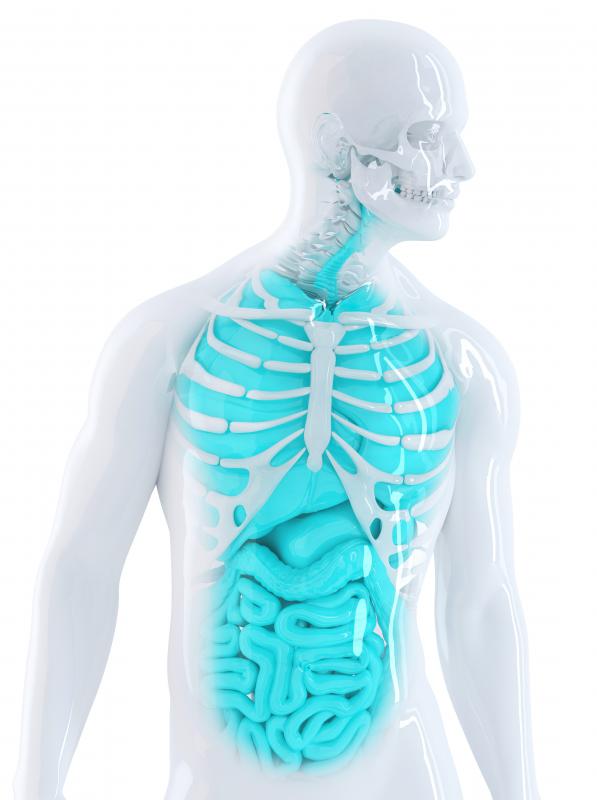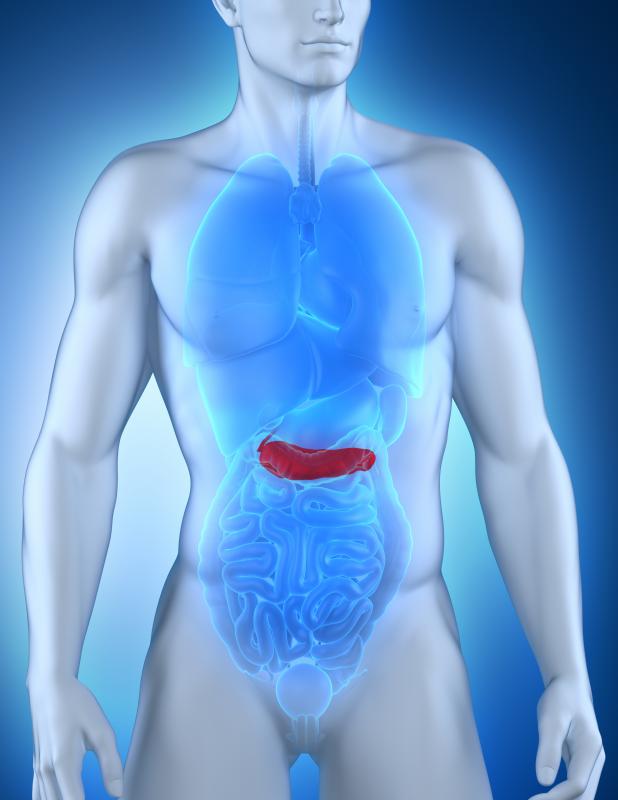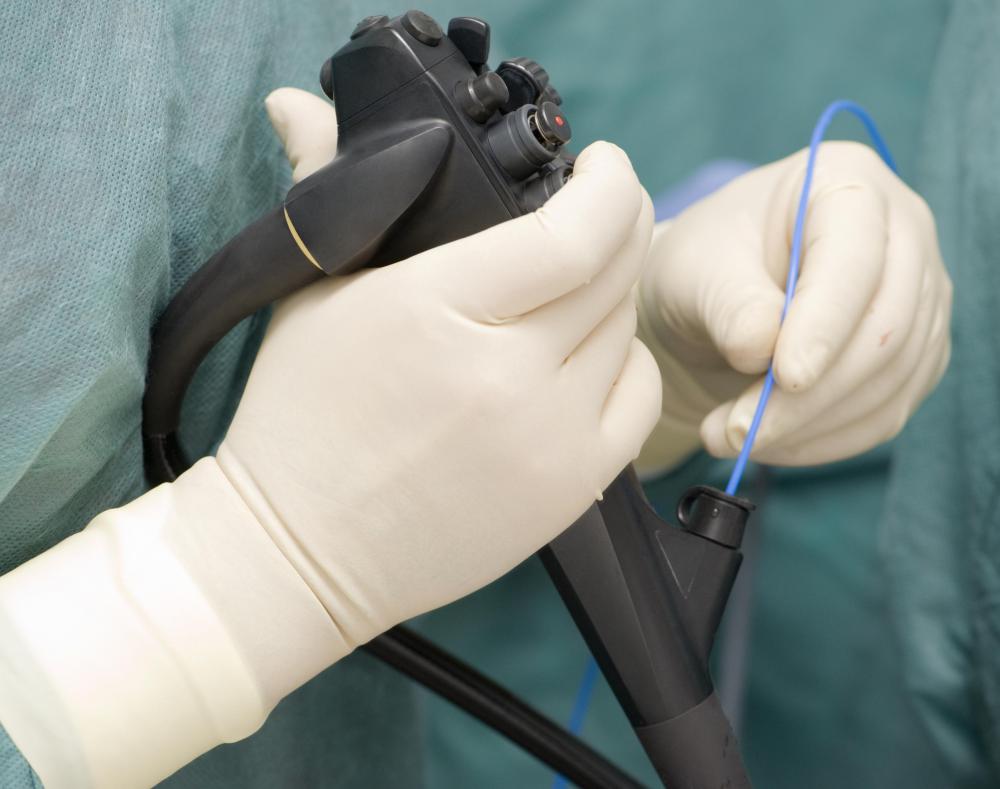At TheHealthBoard, we're committed to delivering accurate, trustworthy information. Our expert-authored content is rigorously fact-checked and sourced from credible authorities. Discover how we uphold the highest standards in providing you with reliable knowledge.
What Are Accessory Organs of the Digestive System?
The stomach and the small and large intestines are the main digestive organs, but they would not function without the aid of other organs and glands. Accessory organs of the digestive system are those that assist with digestion in some way, including by producing and secreting digestive enzymes. These organs include the pancreas, the liver and the gallbladder, as well as several different glands.
Without the aid of the accessory organs of the digestive system, digestion would not occur within the stomach or small intestine. Each organ and gland plays a very specific role in the system. In this way, they are as essential to the process as the main organs where digestion actually takes place.

The pancreas produces pancreatic juices, which contain several different digestive enzymes. This organ lies directly below the stomach and secretes the pancreatic juices directly into the duodenum of the small intestine. Different enzymes within the pancreatic juices are responsible for the digestion of proteins; lipids, or fats; and carbohydrates into their smallest units so they can be absorbed into the body. Pancreatic juices also contain sodium hydrogencarbonate, which helps neutralize the acid from the stomach so the enzymes are not broken down.

The liver is the largest organ in the body and has several different roles for maintaining health and a stable condition. As one of the accessory organs of the digestive system, it is involved in the digestion of fats found in food. To do this, it produces a green, watery fluid called bile. The green color of bile comes from a pigment called bilirubin. This is produced when old or damaged red blood cells are broken down within the liver.

Bile is produced continuously by the liver and it is stored in the gallbladder. When it is required for digestion, it is emptied from the gallbladder into the duodenum through the bile duct. While there are no enzymes found within bile, it does contain bile salts that are necessary for the digestion of fats and lipids.
Bile salts emulsify fats, which means they split them up into smaller droplets similar to what is seen when detergent is added to fats and water. Lipase, which is produced by the pancreas, is the enzyme that carries out the digestion of the lipids into fatty acids. The smaller droplets of fats that have been produced through the action of the bile salts makes digestion by lipase a lot easier and more efficient.
AS FEATURED ON:
AS FEATURED ON:

















Discussion Comments
@feruze-- I think those drugs prevent the production of bile acids. The kidney produces this through bile and then the bile acids break down fats in the intestine. These drugs lead to vitamin deficiencies.
There are some weight loss medications now that affect the production of bile to prevent bile from breaking apart fats. This way, the body doesn't digest fats and the fat molecules are passed out of the body without being stored. Apparently this prevents weight gain and encourages weight loss.
What do you guys think about these medications? Is it a good idea to be messing with the digestive system like this?
Won't this have some serious consequences?
I was reading about fatty liver syndrome the other day because I have a relative who has been diagnosed with it. I found out that the liver digests fructose, the sugar in fruit. Before I read this, I thought that everything was digested by the stomach and the intestines.
This is why people with fatty liver are warned to stay away from high fructose fruits because it tires out the kidney and prevents it from regenerating itself.
Post your comments